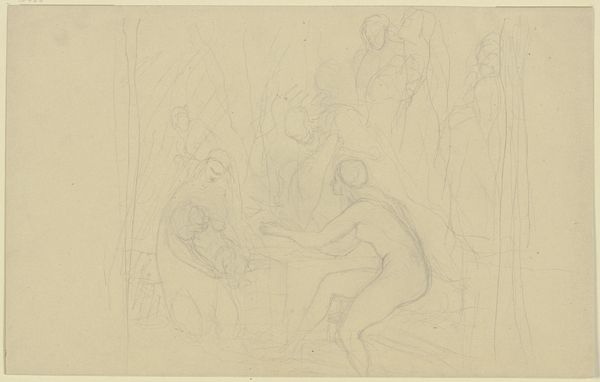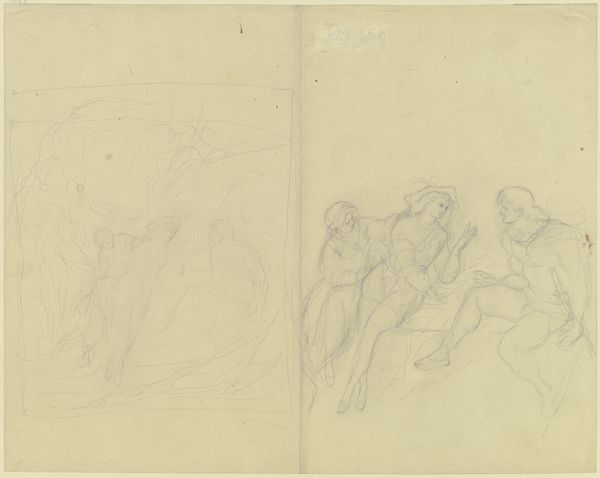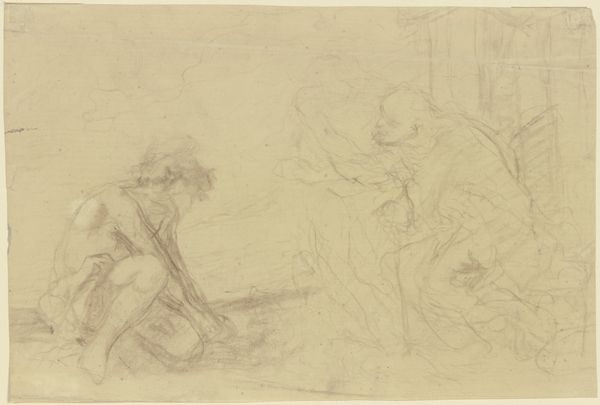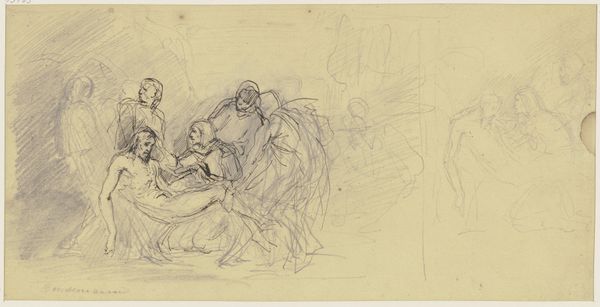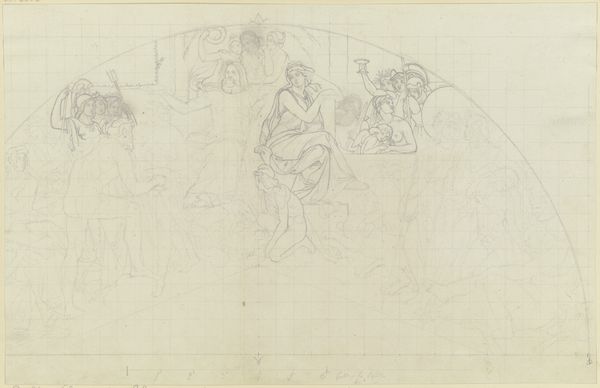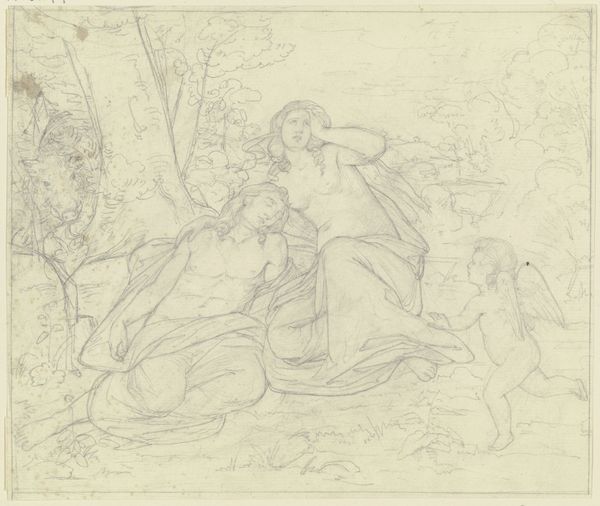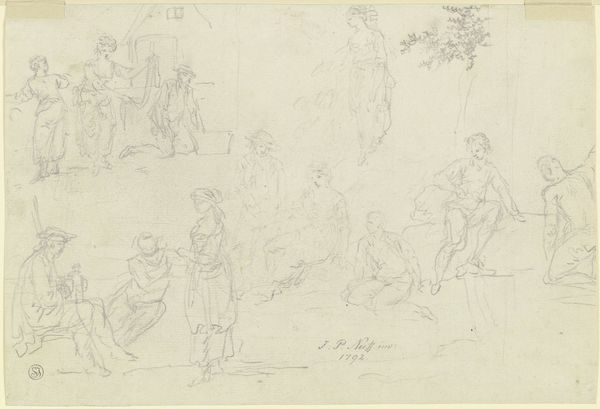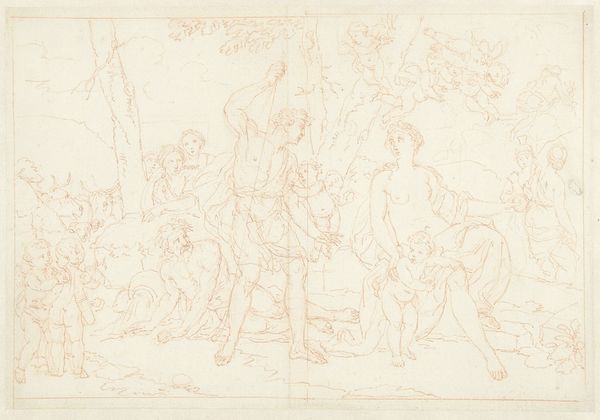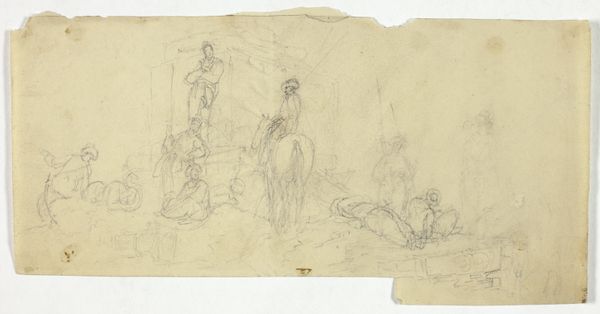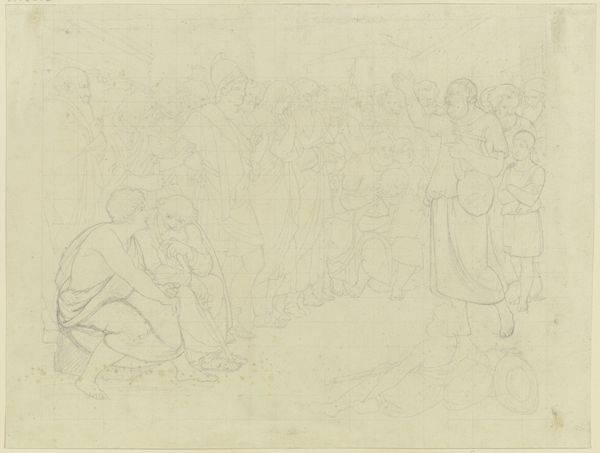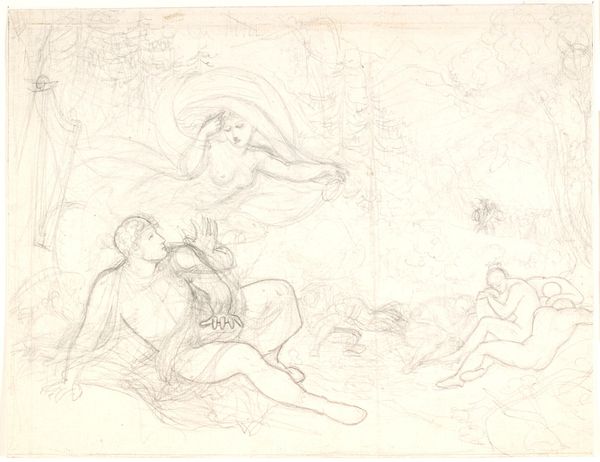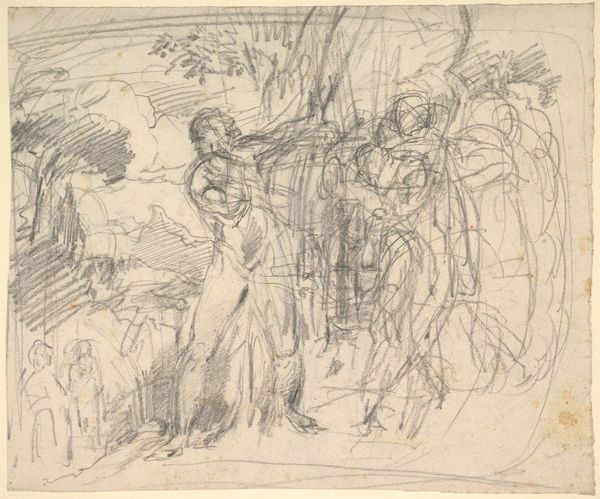
drawing, red-chalk, paper, pencil
#
drawing
#
red-chalk
#
figuration
#
paper
#
romanticism
#
pencil
#
line
#
history-painting
Copyright: Public Domain
Editor: Here we have "The Torch Relay," a red-chalk drawing on paper by Philipp Veit, circa 1832. I'm immediately struck by the dynamism here, the way Veit uses these strong lines to convey movement. How do you see this piece fitting into its historical moment? Curator: That dynamism you observe is quite telling. This drawing comes from a period steeped in Romantic ideals and rising nationalism. Consider the very subject matter: a torch relay, inherently symbolic of passing on knowledge, tradition, or perhaps even revolutionary ideals. Veit, as a key figure in the Nazarene movement, aimed to revive spirituality in art, rejecting what they saw as the cold classicism promoted by the French Academy. Editor: So, the choice of the torch isn't just aesthetic, it's a statement? Curator: Precisely. Think of the institutions that historically controlled art. Academies dictated style and subject. But artists like Veit were forging new paths, quite literally relaying a "torch" of artistic vision. His engagement with the themes of history and moral purpose in the torch relay suggests his strong commitment to a reformed, morally elevated artistic practice, opposing to dominant academic system. Notice also how the sketch, rather than a finished painting, leaves space for interpretation. This very incompleteness becomes part of its political statement. Editor: That's a fascinating way to consider the artistic choices in this drawing. I hadn’t considered the "unfinished" aspect as a challenge to established norms. Curator: It invites us to reconsider the artwork’s production within the socio-political milieu. Are there other elements in the work you'd now interpret in this way? Editor: Now that you mention it, the figures' almost classical garb, contrasted with the rough, sketch-like quality, makes it seem like he is intentionally mixing traditional imagery with a modern sensibility. Thanks, that sheds new light on this piece for me! Curator: And for me too, reflecting on how we read artistic statements.
Comments
No comments
Be the first to comment and join the conversation on the ultimate creative platform.
